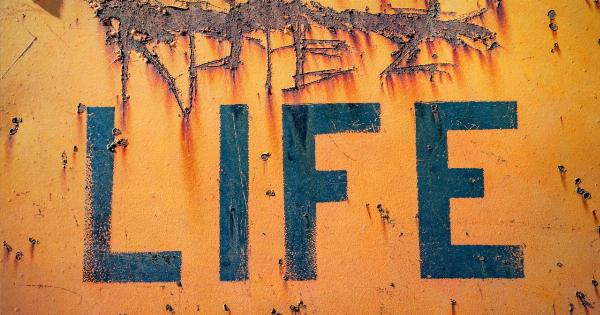Natural disasters, ranging from hurricanes and floods to earthquakes and wildfires, have been an unfortunate reality throughout human history.
These catastrophic events can cause immense damage to both lives and property, leaving people devastated both emotionally and financially. The true cost of natural disasters is not just measured in terms of immediate damages but also the long-term effects on both individuals and society as a whole.
This is where insurance plays a vital role, providing a safety net for those affected and helping them recover from the aftermath of these events.
Understanding the Economic Impact
Natural disasters have a significant economic impact on the affected areas. The direct damages incurred often include destruction of property, infrastructure, and loss of life.
The costs associated with repairs and rebuilding can run into billions of dollars, depending on the severity of the disaster. The indirect costs, such as the disruption of businesses and the decline in economic activity, can have long-lasting effects on the affected regions.
A study conducted by the United Nations Office for Disaster Risk Reduction estimated that the economic losses caused by natural disasters between 2000 and 2019 exceeded USD 3 trillion.
This staggering figure highlights the scale of destruction caused by these events and underscores the importance of being adequately prepared.
The Human Toll
While the economic impact of natural disasters is significant, the toll they take on human lives cannot be understated. Every year, lives are lost, families are torn apart, and communities are left traumatized due to these catastrophic events.
From the immediate fatalities to the long-term health consequences experienced by survivors, the human toll of natural disasters is devastating.
Insurance plays a crucial role in mitigating this human toll.
By providing financial support to affected individuals, insurance enables them to access necessary medical care, rebuild their lives, and recover from the emotional trauma they have experienced. It ensures that individuals can focus on healing and rebuilding rather than being burdened by the financial strain caused by the disaster.
The Importance of Insurance Coverage
Insurance coverage serves as a critical risk management tool in the face of natural disasters. It helps individuals, families, and businesses recover financially in the aftermath of such events.
By paying out claims for damages and losses, insurance companies provide the necessary funds to repair and replace property, and rebuild lives.
There are various types of insurance coverage available to protect against different natural disasters. For example, homeowners’ insurance policies typically cover damages caused by fire, earthquakes, hurricanes, and other weather-related events.
Separate flood insurance policies may be necessary for those living in flood-prone areas.
Businesses can also secure insurance coverage to protect their assets, equipment, and revenue in case of a natural disaster.
Such coverage allows them to rebuild their operations and resume business, minimizing the economic impact on both the company and the community in which they operate.
The Role of Government and Insurance
While insurance plays a crucial role in disaster recovery, governments also have a responsibility to manage the risks associated with natural disasters.
In many countries, governments provide support and relief programs to affected individuals and communities through various mechanisms, such as disaster assistance funds.
Insurance companies work hand in hand with governments to manage the risks associated with natural disasters.
In some cases, they may partner with governments to offer subsidized insurance coverage or create incentive programs that promote proactive disaster preparedness. This collaboration ensures that both insurance companies and governments share the responsibility of protecting individuals and communities from the devastating effects of natural disasters.
The Challenges of Insuring Against Natural Disasters
While insurance is essential for disaster recovery, there are challenges associated with insuring against natural disasters. One of the major challenges is the assessment and prediction of risks associated with these events.
Natural disasters, by their very nature, are unpredictable and occur with varying degrees of severity. This unpredictability makes it challenging for insurance companies to accurately assess risks and set appropriate premiums.
As a result, premiums for properties located in high-risk areas may be significantly higher, making insurance less accessible and affordable for those who need it the most.
Another challenge related to insuring against natural disasters is the concept of moral hazard. Moral hazard refers to the increased likelihood of individuals engaging in risky behavior when they are insured against potential losses.
For example, individuals may be less likely to invest in disaster resilience measures if they believe insurance will adequately cover their losses in the event of a natural disaster. This behavior can lead to increased damages and higher insurance claims, resulting in higher premiums for everyone.
Additionally, the complexities of understanding the risks associated with climate change pose further challenges for insurance companies.
The frequency and severity of some natural disasters are increasing due to climate change, making it difficult to accurately assess future risks and provide adequate coverage.
The Way Forward: Mitigation and Resilience
Despite the challenges, there are steps that can be taken to improve disaster resilience and ensure the availability of affordable insurance coverage. One such step is investing in disaster preparedness and mitigation measures.
By implementing infrastructure improvements, such as better stormwater management systems or earthquake-resistant buildings, the potential damages caused by natural disasters can be reduced. This, in turn, helps insurance companies accurately assess risks and provide coverage at affordable rates.
Public education and awareness programs can also play a pivotal role in disaster resilience.
By educating individuals about the risks they face and the importance of insurance coverage, people can make informed decisions and take necessary steps to protect themselves against the financial implications of natural disasters.
Conclusion
Natural disasters pose significant risks to both lives and property. The economic and human toll of these events is immense and can have long-lasting effects on individuals and communities.
Insurance plays a vital role in disaster recovery by providing financial support to those affected, enabling them to rebuild their lives and recover from the emotional trauma they have experienced.
While insuring against natural disasters has its challenges, it is essential to ensure that individuals and businesses are protected from the financial burdens caused by these events.
Collaboration between insurance companies, governments, and individuals is crucial to improving disaster resilience and creating affordable insurance coverage for all.





























